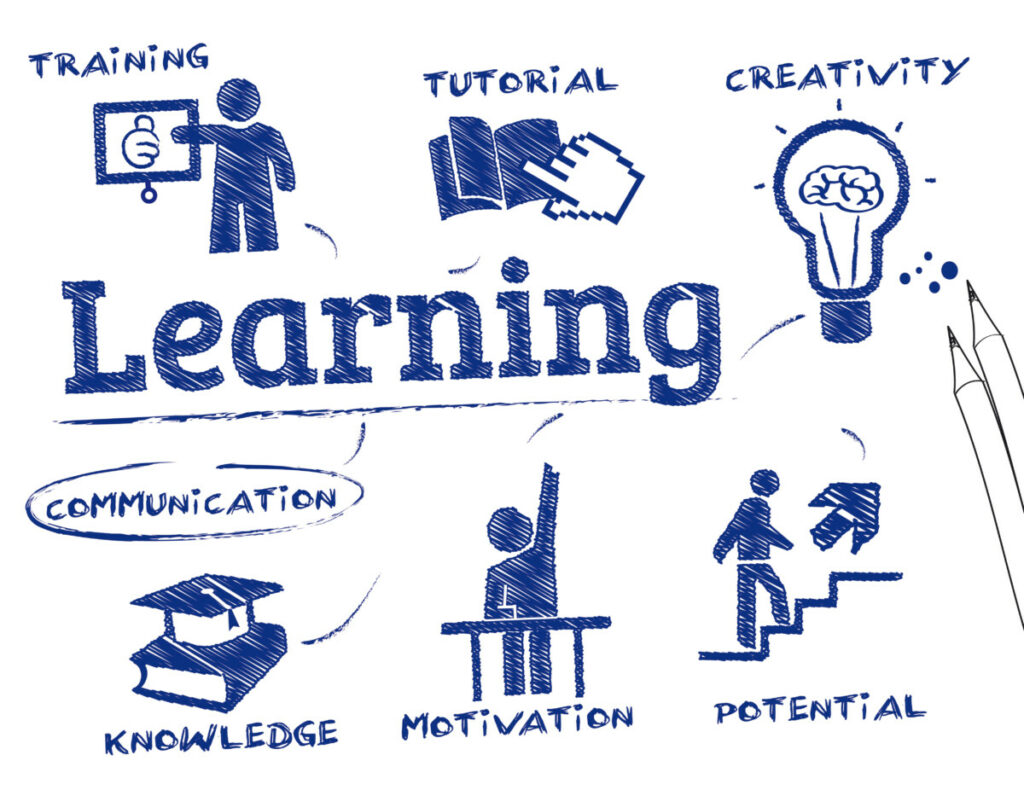
Are you wanting to learn sign language, but aren’t sure if it would be too hard for you? Well, we are here to help you answer that question!
It is relatively difficult to learn sign language, as it is a complex language that sometimes involves difficult hand gestures. However, with enough time, perseverance, the right learning tools, and lots of practice, many people are surprised at how quickly they learn sign language.
Some important things to know before and while you are learning how to communicate in sign language are below. Keep reading to find out more about the difficulty of learning sign language!
How Difficult is it to Learn Sign Language?
How hard it is to learn sign language varies. Some people are able to become fluent within a year, while it takes 2-3 for others. The tips and tricks for learning any other language quickly also apply when learning sign language. That being said, if a student breaks down the steps to learning how to sign and devotes 15 to 45 minutes per day to learning the language, they will make stellar and steady progress! Another golden rule of learning sign language is to make as many signing friends as possible and immerse yourself in the language and culture.
One thing that will influence how quickly it will take for you to learn sign language is your hands. If your hands are quite nimble and your fingers are thin, you will likely have no problem signing. However, if the opposite is the case, you may struggle to sign more difficult words. That won’t stop you, but it may take you longer to get the hang of harder signs.
This video below helps in laying out some of the basics for learning sign language, including hand shapes, finger spelling, and practice basics!
The Best Tools When Learning American Sign Language
The best thing you can do when learning to sign is to practice with a native speaker of the language! In this case, that means finding some deaf or hard-of-hearing friends to sign with! Even better, sign language tutors can be hired online to help people master ASL. Tutors like this can be paid to teach adults, teens, or children how to sign. Sometimes high schools or communities will have ASL clubs that you can attend that will help you learn sign language.
However, keep in mind that when you go to these clubs, many deaf or hard-of-hearing people will be there, so you may not be able to communicate with everyone right away. Also, when you go to an ASL club, keep your clothing and jewelry plain. Don’t wear any distracting patterns or sparkly jewelry, as they can be distracting. When my Mom was a sign language interpreter, she wore a lot of black clothing and didn’t wear any jewelry except for her wedding ring.
Since tutors can be costly at times, books may be the best way for you to learn sign language. There are some very helpful books that can be purchased at bookstores or websites or checked out from libraries. Some books will have useful pictures and diagrams of how to create the needed hand signs and their meanings. However, since it can be tough to interpret how these signs will look in motion, so have people show you how to make certain signs and watch sign language videos.
Finally, websites and online resources are stupendous things that can help you learn how to sign. Popular websites like SignLanguage101.com, StartASL.com, Marlee Signs, LessonTutor.com, Expert Village, ASLPro.com, and SchoolOfSignLanguage.com are all excellent online resources to put to good use when learning to sign. Recorded lessons from teachers and professionals can really help you learn to sign, as students can practice and see signs in real time.
Is Sign Language Different Around the World?

Sign language varies depending on which country the signer is currently in! From country to country, each form of sign language will be very unique from the last, since there are American, British, Australian, New Zealand, Irish, French, and Japanese versions of sign language!
In fact, there are roughly more than 130 official types of sign language depending on location in the world. Some experts say there may be as many as 300 different types of sign language.
According to some public online question-and-answer forums, there is not much overlap with, for instance, British and American sign language, even though the verbal languages are very similar! Sign language is a diverse language that is as nuanced as spoken languages.
How Long Does It Take to Learn Sign Language?

The length of time it takes to learn sign language can vary from person to person. Becoming a master in sign language can take between three months to three years in total. Oftentimes, it takes several years of consistent studying and practicing until one is fluent in sign language.
If you want to learn sign language quickly, set goals and keep your goals in mind while practicing sign language. Use it often as well, as the more you practice, the more you will remember. In college settings, it usually takes around six 3-credit classes of sign language over the course of 2 to 3 years total in order to reach a decent skill level.
Comparing Learning Sign Language to Learning Verbal Languages
Interestingly, verbal languages and nonverbal languages like sign language use similar, nearly identical parts of the brain when people are speaking or using either of them. Some people from online message-answering forums who have learned sign language declare that it is easier to learn than oral languages.
They assert that signing is easier because it lacks word endings and doesn’t have any verb tenses to learn! This saves time and avoids tedious and lengthy memorizing of word conjugations. Another interesting difference with sign language is that this language doesn’t have articles like “a, an, the,” which don’t need to be signed.
Hardest and Easiest Things About Learning ASL
To name a few of the challenges that are unique to sign language–the sentence structure and understanding incoming sign language from others.
First off, American Sign Language has a unique approach to sentence structure since the structure can be ordered as “time” + “subject” + “verb” + “object” or “time” can all be at the end of a sentence. Sentence structures are most often ordered as “subject” + “verb” + “object” in sign language.
So, for example, while a spoken English sentence may be said as “I traveled to Mexico a year ago,” if one were to sign it, it would be signed as “last year I went (go + finish) Mexico.”
Another example sentence of similar ASL structure would be “finish go library me” to say “I went to the library.” It may seem odd at first, but this structure is something that anyone can get used to through practice.
Secondly, people who have learned sign language often report that it can be difficult to understand signed hand signals that their friends, family, and new acquaintances use with them. Some people call this ‘reverse interpreting’ as an onlooker’s brain is busy mentally translating the hand signs they are seeing.
Students of sign language may find it difficult to decipher signs since they often don’t have as much practice in seeing them, and are brand new to deciphering and understanding the language. Some helpful advice for overcoming this hurdle is to practice sign language by watching songs signed in ASL and personally signing songs.
By speeding up signing to sign to the beat and rhythm of faster and faster music, jerky beginning signing will speed up to be smoother, and comprehension of others’ signing will speed up too.
Who Uses Sign Language?
Hearing people, those hard of hearing, deaf people, and those who are hearing and nonverbal all commonly use sign language. In fact, both of my parents learned sign language as missionaries, even though they are both hearing. Those who learn the language can become very successful interpreters, tutors, or teachers of sign language to people in these communities!
Surprisingly large segments of the sign language community are made up of people who are nonverbal due to unique conditions like autism, down syndrome, cerebral palsy, speech disorders, and brain disorders, or who suffered trauma. Some parents even use it with their kids if their children have shorter attention spans or possess limited language skills so they can communicate effectively.
Furthermore, sign language can serve as a language development tool on the path to learning a spoken language. It can even help kids to express strong emotions they feel and decrease their own frustration. If people have speech disorders or motor disabilities such as aphasia, cerebral palsy, down syndrome, or autism, sign language can serve as a crucial form of helpful and accessible communication.
Animated Elements of Sign Language
It may come as a surprise to some, but learning sign language is far more than just a, pardon the pun, literal hands-on language! Not only do people learning the language need to learn the hand signals for new words, but there is an important system of rules to learn in regard to facial expressions.
While signing, facials, eyebrow movement, and lip shapes contribute to the meanings and interpretations in the language. Indeed, purposeful movement of the body and face are very important parts of the grammar of the visual language of sign language.
Being animated and lively while signing will help one be expressive and communicative. When signing, mouth and eye movements can serve as adverbial or adjectival modifiers in the language. Moving the eyebrows and head can signal sentence-level syntactic functions as well. Many people even speak or make noises as they sign to help express their emotions and meanings.
In addition to these movements, a person’s body positioning can indicate different discourse-level structures in grammar. It’s also important to know that some facial emoting is just pure emotion related to what is being signed. This is all a lot to keep track of, but the more someone spends around fellow signers, the more they will get used to body and facial signals.
Should I Learn Sign Language?
If you are interested, you should absolutely learn sign language. It never hurts to learn to sign, as you never know when you will need it. My parents use it daily to talk about things they don’t want their kids to know and communicate while at church.
For example, while I was in Washington D.C., the leaders of the volunteer group that I was a part of actually signed with the 200 or so young adult volunteers under their direction all of the time! They used their knowledge to help serve a group of deaf citizens of the Virginia area, and it was fascinating and wonderful to hear of all the friends they made and families they helped through sign language.
If you plan on having children in the future or already have kids, if you learn sign language and teach them a few basic signs, you can communicate with them even before they start talking.
Also, it can be incredibly frustrating to have to text or type what you want to say when you want to talk to someone who is dear or hard of hearing.
Thanks to the powerful language of sign language, a study of the art form can communicate with millions of people, teach their kids to sign, and gain a beautiful form of personal expression.
Those who learn sign language not only grow their communication skills, improve their attention span, increase their memory capability, and gain more creativity, but their reasoning and cognitive function also improve overall! Not only do these mental benefits count as a bonus of ASL, but spatial awareness, visual sensitivity, and mental rotation skills are also proven to improve from scientific studies held on sign language.
So, if anyone is a fan of better-developed mental, vision, and motor skills, along with all the other positive rewards, start learning sign language!
